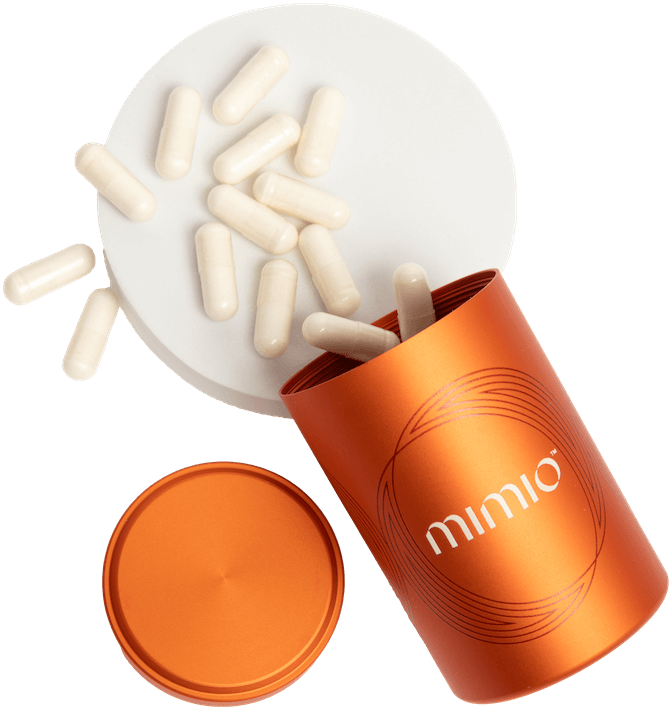Carb Counting for Ketosis: How Many Carbs are Needed to Maintain Ketosis?
The Ketosis Question
Whether you’re fasting, fat-fueled, or flirting with keto-curiosity, there’s one question that always comes up:
How many carbs can I eat and still stay in ketosis?
Ketosis isn’t just a buzzword. It’s a powerful metabolic state where your body shifts from using glucose to burning fat for fuel. Think of it as your body flipping the switch to “fat-burning mode.” For many, this shift supports weight management, sharper mental clarity, and even longevity.
But getting into ketosis—and staying there—depends largely on your carbohydrate intake. So how low do you really need to go? And how can you find the sweet spot without tanking your energy or going full caveman?
Let’s break it down.
What Is Ketosis (And Why Should You Care)?
Ketosis occurs when your body runs out of quick-access glucose (from carbs) and begins converting fat into ketones, which become your primary energy source.
Ketones aren’t just backup fuel—they’re clean-burning, brain-friendly, and deeply linked to:
-
Reduced inflammation
-
Improved metabolic health
-
Enhanced mitochondrial function
-
Neuroprotection
-
Anti-aging effects
This metabolic shift mimics many of the benefits of fasting, which is why it’s popular among biohackers, healthy agers, and longevity seekers.
But here’s the thing: it’s not one-size-fits-all. Your daily carb limit to stay in ketosis depends on multiple factors.
The Ketosis Threshold: General Guidelines
Let’s start with some baseline numbers.
|
Carb Range (per day) |
Ketosis Status |
What It Means |
|
0–20g net carbs |
Deep ketosis |
Ideal for fast entry into ketosis and therapeutic uses |
|
20–50g net carbs |
Nutritional ketosis |
Most people stay in mild-to-moderate ketosis here |
|
50–100g net carbs |
Borderline ketosis |
May work for active or metabolically flexible individuals |
|
100g+ net carbs |
Out of ketosis |
Too high for most people to maintain ketosis |
Net carbs = Total carbs - fiber - sugar alcohols (like erythritol or monk fruit)
Factors That Influence Your Carb Limit
Not everyone hits ketosis at the same carb number. Your threshold is influenced by:
1. Activity Level
The more you move, the more glucose you burn. Active individuals (especially those who do high-intensity workouts) can sometimes handle higher carb loads while staying in ketosis.
2. Metabolic Flexibility
Some people switch between carb and fat-burning modes easily. Others need a stricter approach to reach or maintain ketosis.
3. Insulin Sensitivity
High insulin levels block fat burning and ketone production. The more insulin-resistant you are, the lower your carb intake needs to be to enter ketosis.
4. Meal Timing and Fasting
Intermittent fasting lowers insulin and accelerates ketosis, allowing you to tolerate more carbs during eating windows.
5. Macronutrient Ratios
It’s not just about carbs. High fat + moderate protein + low carb = the keto trifecta. Too much protein can kick you out of ketosis due to gluconeogenesis (turning protein into glucose).
Sample Macros for Staying in Ketosis
Here’s a snapshot of a standard keto macronutrient breakdown:
|
Macro |
Percentage |
Grams (for 2,000 cal/day) |
|
Fat |
70–75% |
155–167g |
|
Protein |
20–25% |
100–125g |
|
Net Carbs |
5–10% |
20–50g |
This ratio keeps your body in a state of fat-fueled metabolism while minimizing insulin spikes.
Visual Chart: Carb Limits Based on Goals
|
Goal |
Daily Net Carb Target |
Ketosis Level |
|
Deep therapeutic ketosis (e.g. epilepsy) |
<20g |
High ketone production |
|
Weight loss or longevity |
20–40g |
Nutritional ketosis |
|
Active lifestyle, moderate keto |
40–60g |
Low-to-moderate ketosis |
|
Metabolic flexibility maintenance |
60–100g |
Ketosis possible with IF |
How to Track Ketosis (Without Guessing)
If you’re serious about knowing whether you’re in ketosis, consider tracking:
1. Ketone Levels
-
Blood meters (like Keto-Mojo): Most accurate
-
Breath analyzers: Convenient but less precise
-
Urine strips: Best for beginners (but become less reliable over time)
2. Glucose-Ketone Index (GKI)
A longevity biohacker favorite.
GKI = blood glucose (mg/dL) ÷ 18 ÷ blood ketones (mmol/L)
|
GKI Range |
Metabolic State |
|
<1 |
Therapeutic ketosis |
|
1–3 |
High-level ketosis |
|
3–6 |
Nutritional ketosis |
|
>9 |
Out of ketosis |
Common Keto Mistakes That Kick You Out of Ketosis
-
Hidden carbs: Sauces, dressings, “keto” snacks
-
Too much protein: Gluconeogenesis alert
-
Snacking all day: Insulin spikes throughout the day disrupt fat metabolism
-
Inconsistent fasting: Eating too frequently blocks ketone production
-
Not enough fat: Fat should be your main fuel
Using Fasting + Biomimetics to Support Ketosis
You don’t have to rely on food alone to stay in ketosis.
1. Intermittent Fasting
-
Shortens your eating window
-
Speeds up entry into ketosis
-
Boosts autophagy and hormone sensitivity
Popular fasting protocols:
-
16:8 (eat within 8 hours)
-
18:6 or OMAD (one meal a day)
-
36-hour fasts for deep metabolic reset
2. Biomimetic Support with Mimio
For those looking to enhance cellular health and maintain metabolic flexibility—Mimio Biomimetic Cell Care is a breakthrough.
It mimics the cellular benefits of a 36-hour fast:
-
Activates autophagy
-
Reduces inflammation
-
Supports mitochondrial function
-
Helps preserve ketone production pathways
Mimio gives you the fasting benefits even when you’re not fasting, or can’t be in perfect ketosis 24/7.
Realistic Carb Tracking: What 20–50g Net Carbs Looks Like
Here’s a practical chart to help you visualize your daily carb “budget.”
|
Food |
Serving Size |
Net Carbs |
|
Avocado (1/2) |
100g |
2g |
|
Broccoli (1 cup) |
91g |
4g |
|
Cauliflower (1 cup) |
100g |
3g |
|
Almonds (1 oz) |
28g |
2g |
|
Raspberries (1/2 cup) |
62g |
3.5g |
|
Olive oil (1 tbsp) |
13g |
0g |
|
Chicken breast (4 oz) |
113g |
0g |
You’ll notice:
-
Vegetables, nuts, and berries fit in easily
-
Oils and proteins are carb-free
-
Carb quality > quantity
Can You Cycle Carbs and Still Stay in Ketosis?
Absolutely. Many people use cyclical keto or targeted keto to maintain performance and hormonal health.
-
Cyclical Keto: Low-carb for 5–6 days, then one higher-carb “refeed” day
-
Targeted Keto: Eat 20–30g of carbs before intense workouts
This strategy can support thyroid, leptin, and muscle-building without fully exiting ketosis long-term.
Finding Your Carb Sweet Spot
There’s no universal number for how many carbs to stay in ketosis—but 20–50g net carbs per day is a solid range for most.
What matters more is consistency, quality of food, and whether you’re supporting your body’s metabolic flexibility—its ability to switch between fuel sources as needed.
Pair that with strategic fasting, biomimetic tools like Mimio, and awareness of your personal carb tolerance—and you’ve got a recipe for metabolic mastery.



